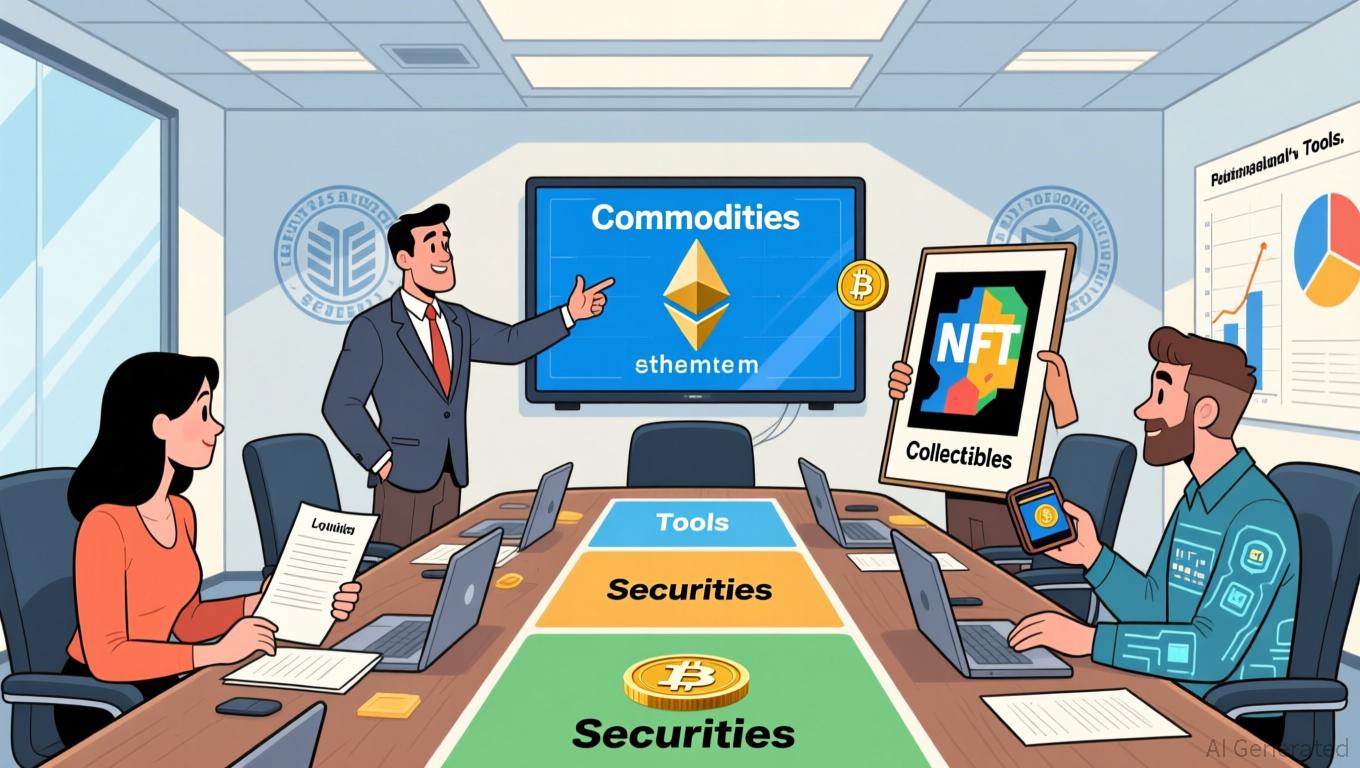Truce Reduces Tariffs, Yet Core U.S.-China Disputes and Fentanyl Regulation Remain Unsettled
- U.S. and China reach trade truce, halving "fentanyl-related" tariffs to 10% amid fragile economic tensions. - China suspends rare earth export controls and commits to soybean purchases, while Trump delays 100% tariffs on goods. - Retailers and tech firms benefit from reduced costs, but reshored manufacturers face competitive risks from cheaper Chinese imports. - Agreement's one-year term and unresolved issues like IP disputes highlight its fragility, with fentanyl controls yet unproven. - Domestic U.S. o
Washington D.C., November 1, 2025 – President Donald Trump's forceful approach toward China has yet to yield sweeping changes, but a recent trade ceasefire with Beijing has brought a tentative pause. After intense negotiations in Busan, South Korea, on October 30, the United States reduced its 20% tariffs on Chinese goods linked to fentanyl to 10%, lowering the average tariff rate from 57% to 47%, according to

Several additional compromises are part of the agreement: China will pause new export restrictions on rare earth elements and magnets—vital to U.S. industry—and has pledged to buy 25 million metric tons of American soybeans each year for three years, Reuters noted. In return, Trump delayed the imposition of 100% tariffs and port charges on Chinese products. While President Xi Jinping has been less outspoken, state media indicated his willingness to work with the U.S. on fentanyl issues, describing the arrangement as a "win-win," according to
Sectors dependent on international trade are set to gain. Retail giants such as
The overall impact of the agreement is uncertain. While it brings temporary stability to U.S.-China trade relations, its one-year term and conditional provisions highlight its vulnerability. China's pledge to regulate fentanyl precursors is yet to be tested, and ongoing disputes over technology and intellectual property remain unresolved, the FinancialContent market minute pointed out. On the geopolitical front, the deal prevents immediate conflict but does little to slow the U.S. drive to separate from China in fields like semiconductors and artificial intelligence, where China is pushing for greater independence, according to
Within the U.S., Trump's tariff strategy is facing resistance. At the end of October, the Senate—with support from four Republican members—voted to end tariffs on imports from Canada, Brazil, and other countries, reflecting bipartisan dissatisfaction with rising costs for both consumers and businesses, as reported by a
Looking forward, the outcome of the truce will depend on China's enforcement of fentanyl regulations and the progress of future trade discussions. While markets are cautiously optimistic, there is skepticism about whether Beijing will fulfill its promises or if shifts in U.S. political leadership will alter the course, the FinancialContent market minute cautioned. The one-year deadline also puts pressure on both countries to address broader challenges, from supply chain security to ideological competition, Reuters added.
For now, the agreement offers businesses some relief and marks a rare moment of cooperation in a divided global economy. Still, as Trump himself admitted, this will only be "a great success" if it leads to lasting change, the FinancialContent market minute observed.
---
Disclaimer: The content of this article solely reflects the author's opinion and does not represent the platform in any capacity. This article is not intended to serve as a reference for making investment decisions.
You may also like
Aave News Update: MiCA Green Light Spurs Aave’s No-Fee On-Ramp, Accelerating Widespread DeFi Integration
- AAVE token gains bullish momentum as on-chain growth and MiCA regulatory approval align for potential $450 price surge. - Technical indicators like TD Sequential signal strong buy opportunities, with $250 breakout likely to trigger renewed uptrend. - Aave becomes first DeFi protocol authorized under MiCA, enabling zero-fee euro-crypto conversions across EEA via GHO stablecoin. - Protocol's $542M daily volume and $22.8B borrowed assets highlight operational growth outpacing undervalued market price. - MiC

XRP News Update: SEC Streamlines Rules, Granting Crypto ETFs a 20-Day Accelerated Approval Process
- SEC introduces 20-day automatic approval for crypto ETFs via updated guidance, accelerating stalled XRP/Solana fund reviews post-government shutdown. - Canary Capital's XRPC ETF generated $58M in volume, intensifying demand for additional crypto ETFs under Project Crypto's regulatory framework. - Backlog filings will be processed in submission order, with post-effective amendments defaulting to approval unless opt-out, reducing market entry delays. - Analysts predict November surge in approvals as SEC mo

Bitcoin Updates: Investors in Crypto Face Panic Amid Stock Market Drop, Bitcoin Falls Under $100K
- US stocks and crypto markets plunged on Nov 15, 2025, with Bitcoin falling below $100K amid extreme investor fear (index at 10) and macroeconomic uncertainty. - Bakkt shares dropped 16% after $23.2M Q3 loss from warrant revaluation, while Grayscale reported 20% revenue decline due to Bitcoin ETF outflows and competition. - DeFi TVL fell sharply across Ethereum/Solana, worsened by $213M in security breaches, as whale activity hinted at Ethereum accumulation ahead of Fusaka upgrade. - Institutional investo

Ethereum Updates: SEC Guidelines Allow Cryptocurrencies to Achieve Commodity Classification
- SEC Chair Paul Atkins proposed a crypto regulatory framework exempting ETH, SOL, and XRP from securities classification using the Howey Test to clarify market roles. - The framework categorizes crypto assets into four groups, allowing tokens to "graduate" from securities to commodities as ecosystems decentralize and utility emerges. - It introduces "super apps" for mixed-asset trading and a six-month compliance grace period, aiming to balance innovation with fraud prevention and reduce regulatory fragmen
